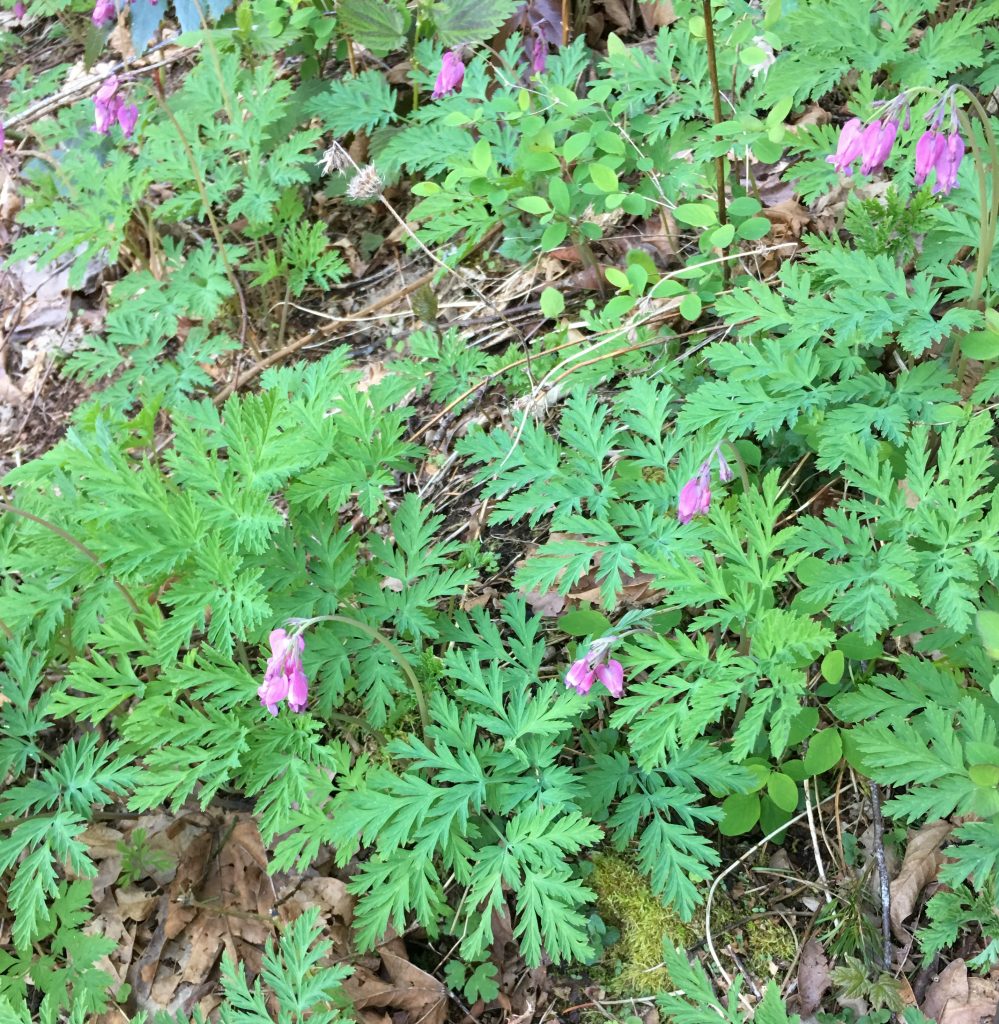Similar to our Bird Watch series, I’m starting a series to keep track of some of the interesting plant species we find on the property. Naturally, it’s called: Plant Watch.
First up: we have native Bleeding Heart’s all over our property. I love how these delicate little purple and pink hearts are scattered all over the land in the late spring and the summer.
What is a Bleeding Heart?
The Pacific Bleeding Heart is from the family Papaveraceae. It also goes by the Latin name Dicentra formosa. As a perennial herb, it comes back year after year. This plant loves the moist woodlands and the forest floor. It is currently not at risk in B.C. and is very plentiful on our property. Did I mention it’s a real beauty?
Plays Nice With…
- Ants. A neat fact is that the Bleeding Heart has a symbiotic relationship with ants. It’s seeds are rich and oily and are a beacon for ants to take them on their travels to their ant hills.
- Hummingbirds. Hummingbirds are one of the main pollinators of the plant.
- Butterflies. Bleeding Hearts are a food source for many species of butterflies which is awesome for our Butterfly Waystation.
Does Not Get Along With…
- Livestock. This plant is known to be toxic to some livestock animals, including some we would like to have one day. However, I’ve spoken to many people who have the plant and livestock and no issues, so I am hopeful we will be able to keep the two of them together (but separate!).
Should You Eat It?
- If your doctor or herbalist recommends it. Medicinally, the root tincture of this plant is said to be excellent pain relief for bruises and sprains. Internally, the tincture is supposed to soothe frazzled nerves after an accident or trauma. It is important to note that this species can be toxic to humans in some circumstances and one should never just consume a plant for medicinal reasons without the guidance of a trained herbalist or medical practitioner.

Becky is a Clinical Hypnotherapist, Registered Holistic Nutritionist, Landscape & Production Horticulturist, Arborist and budding Herbalist, who recognizes and specializes in the link between healthy soil, the gut and the brain. She also loves being the mom to her two wild and crazy kids Brooke & Connor whom keep her and her ever loving, creative husband Jay on their toes.

